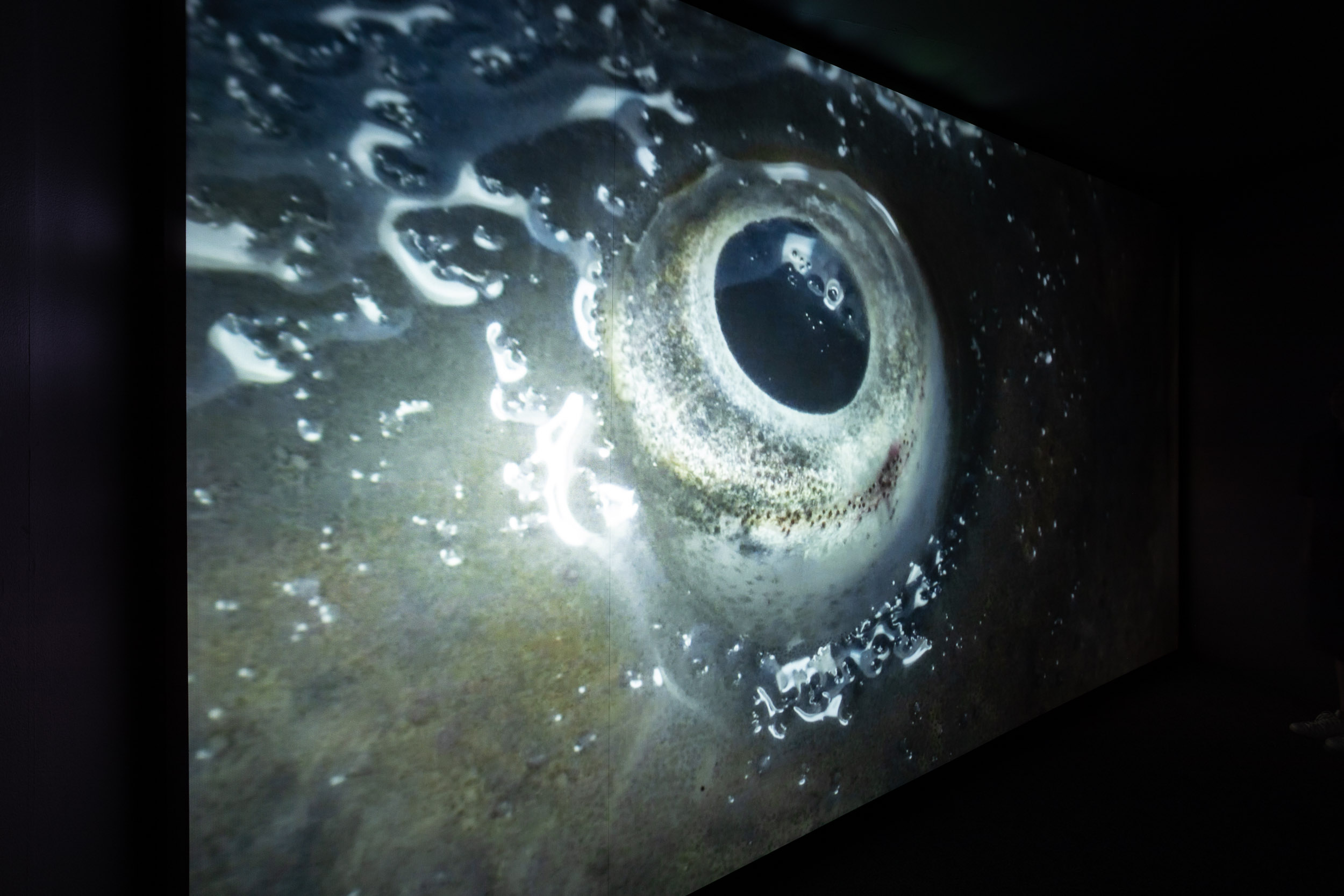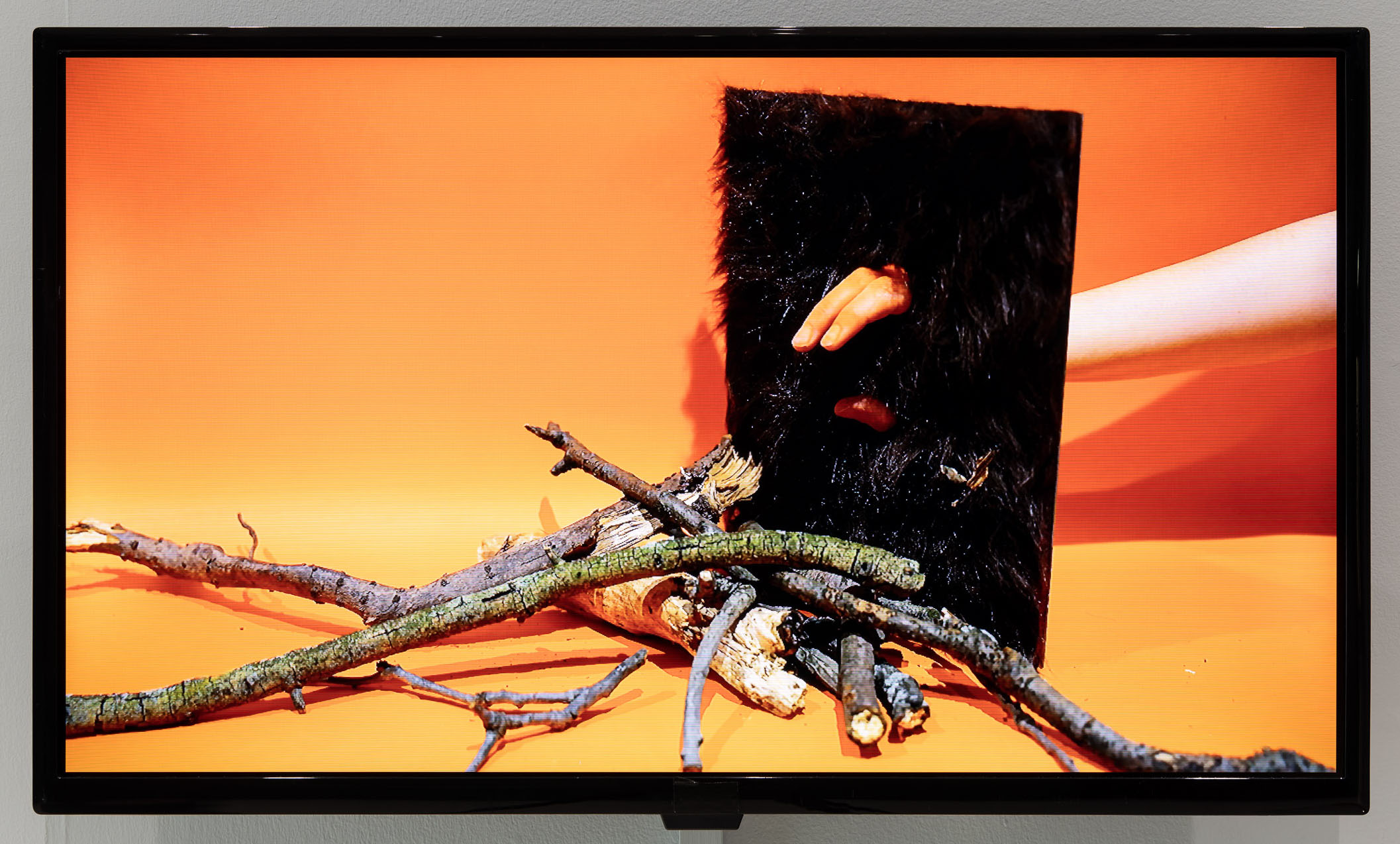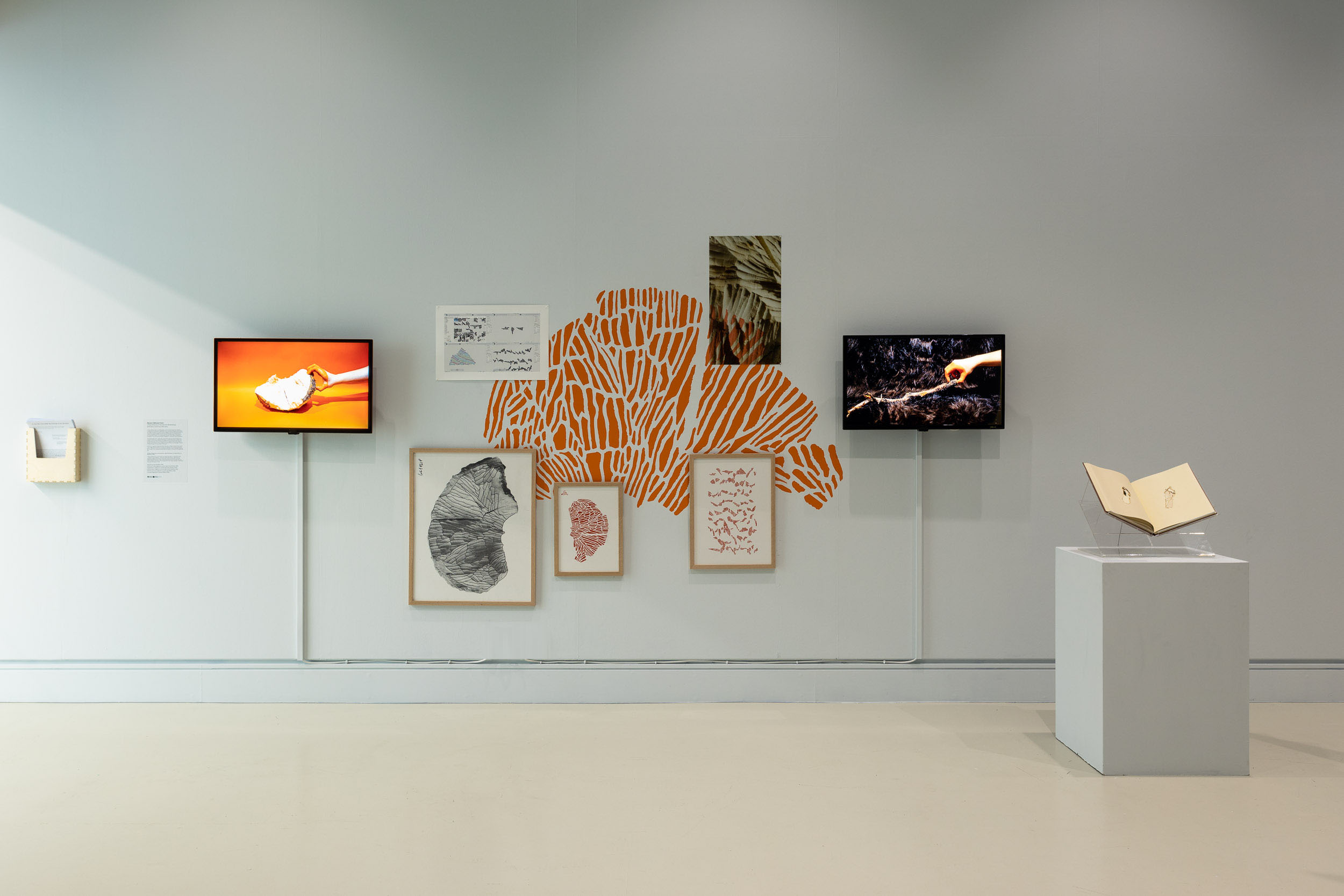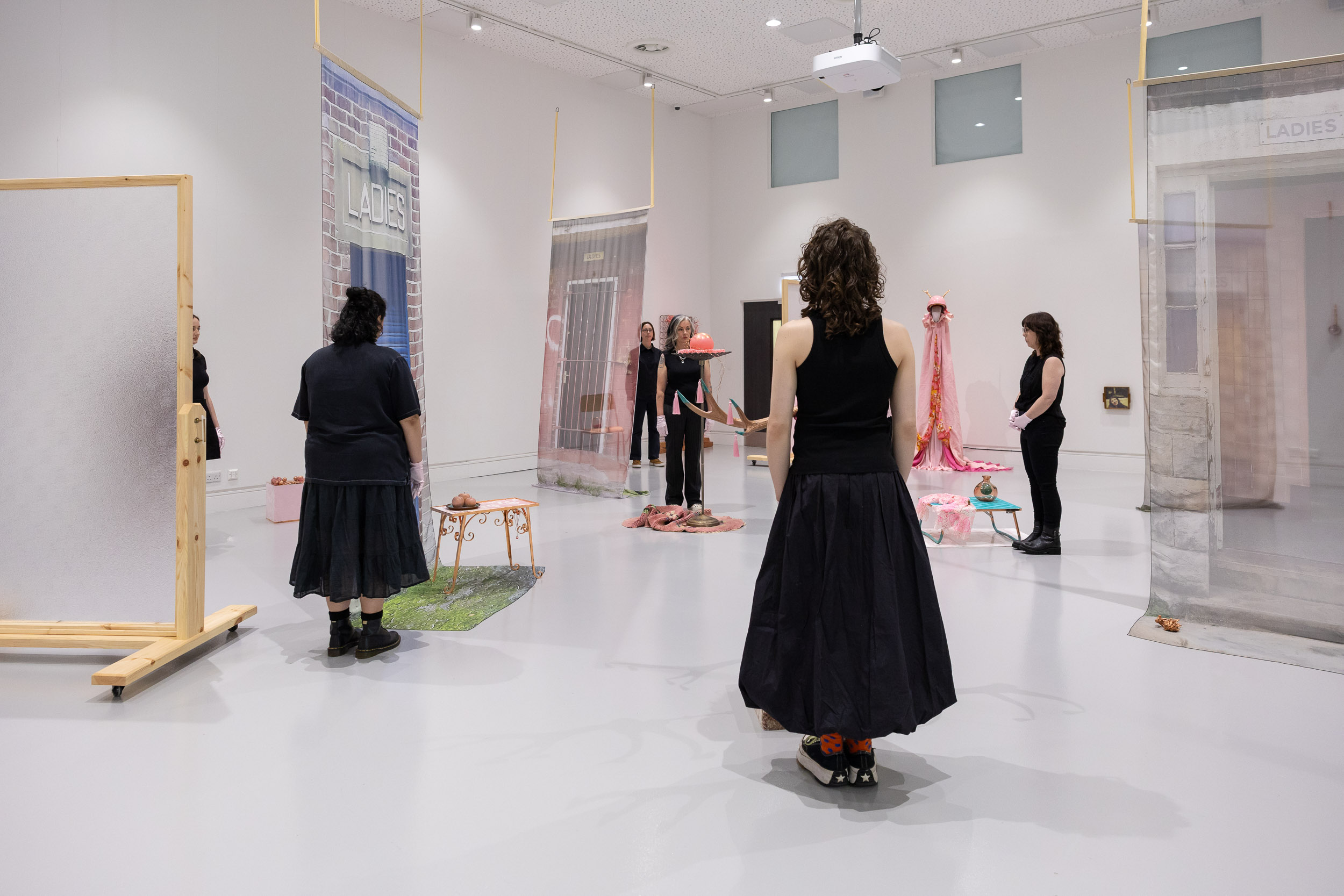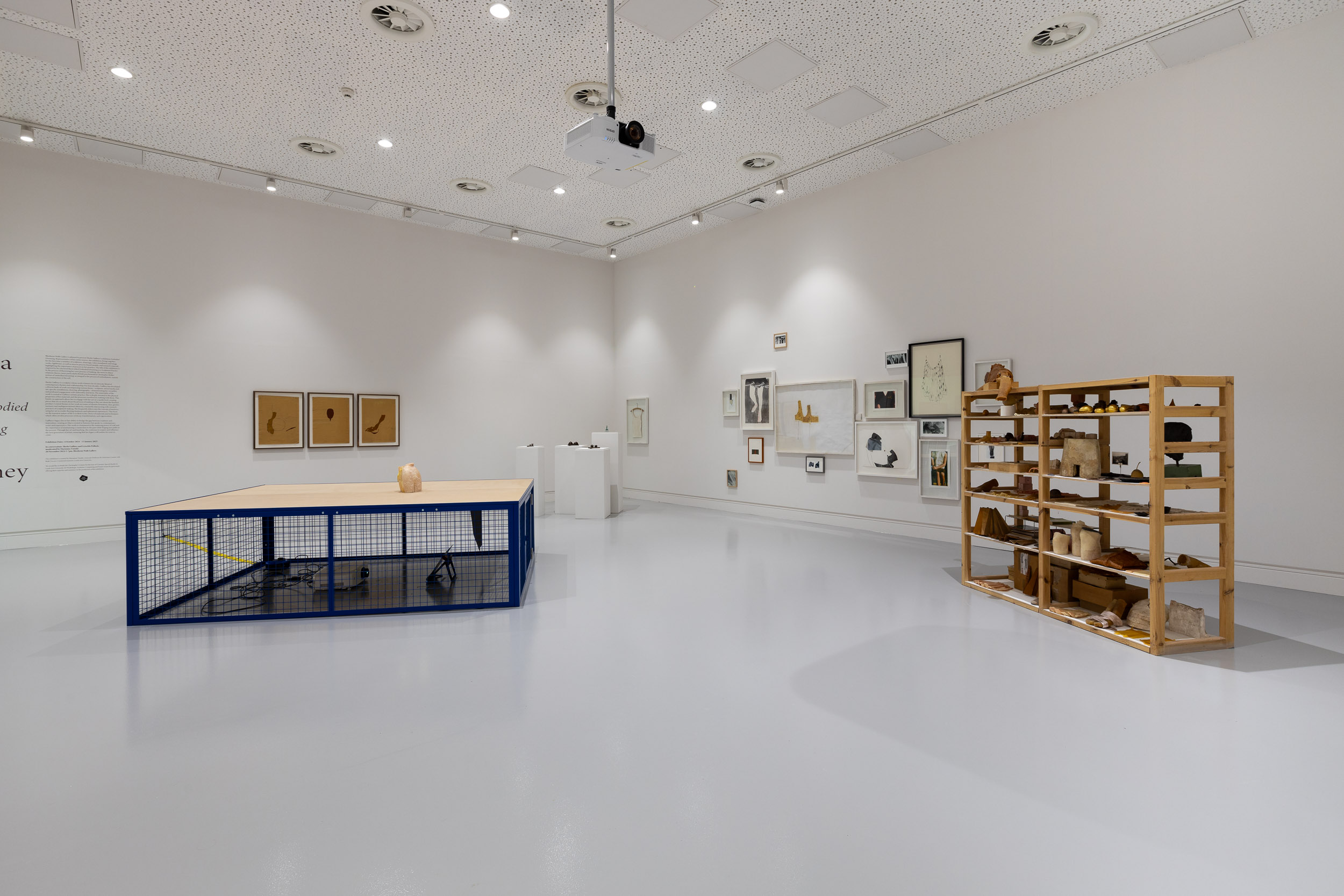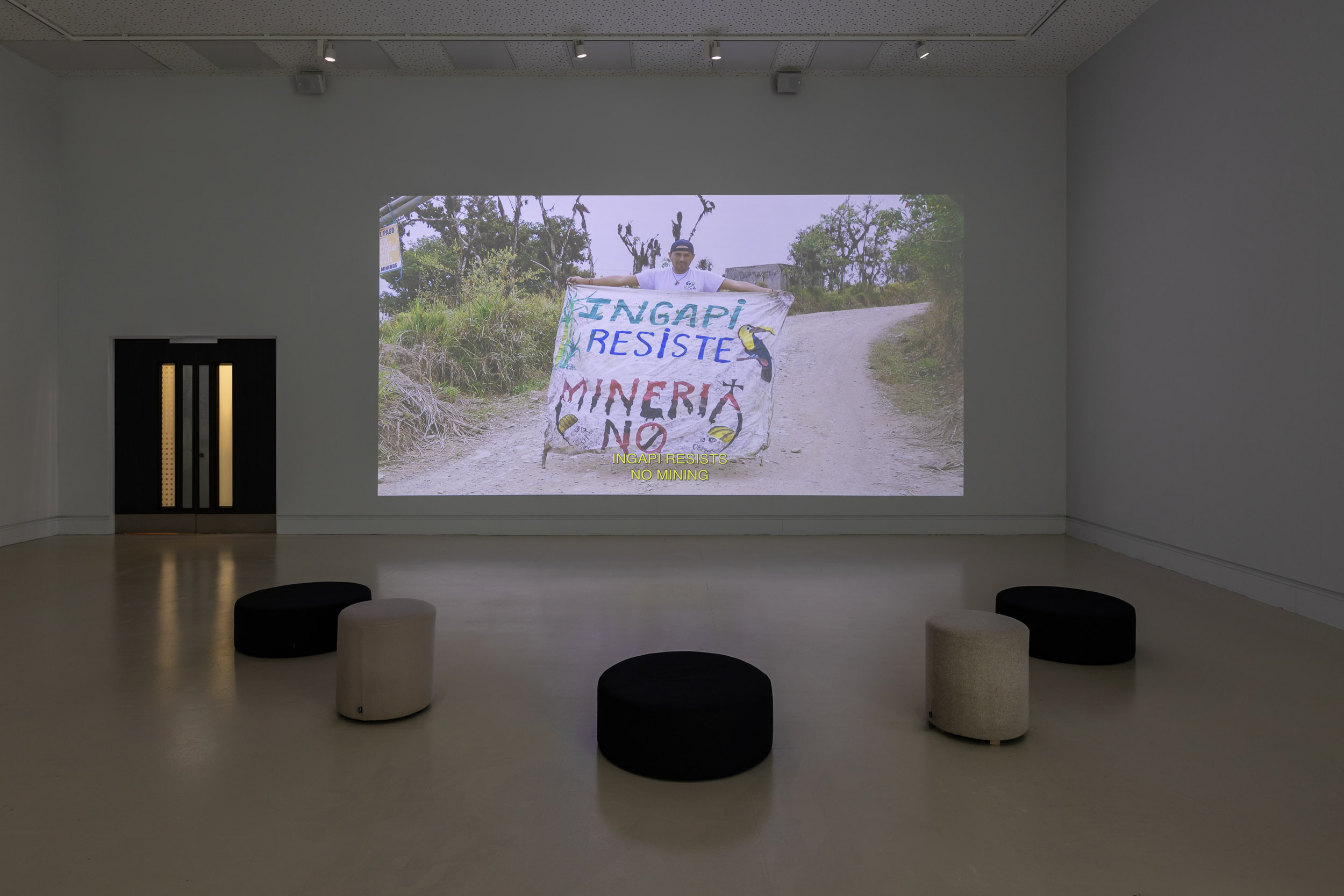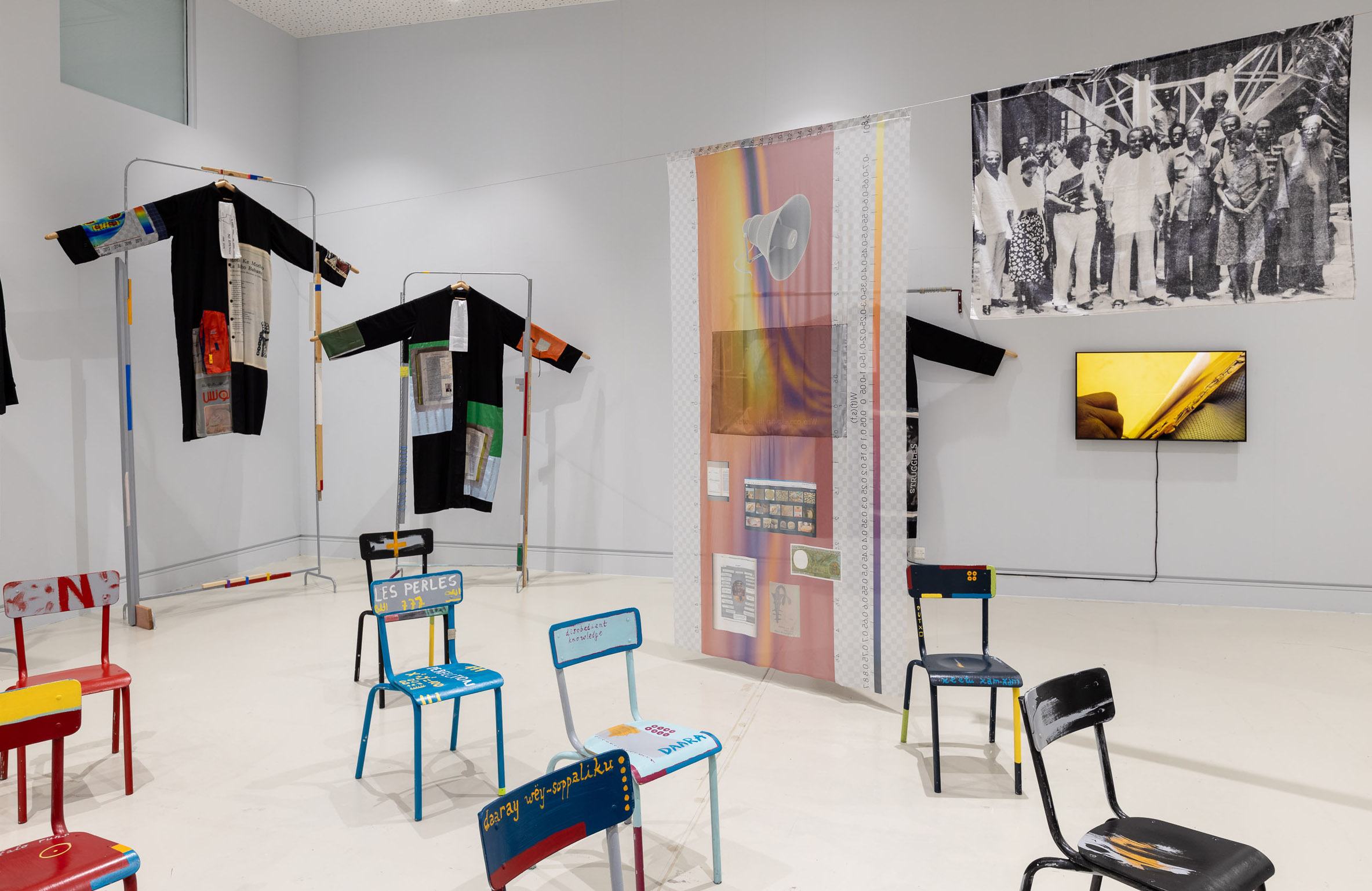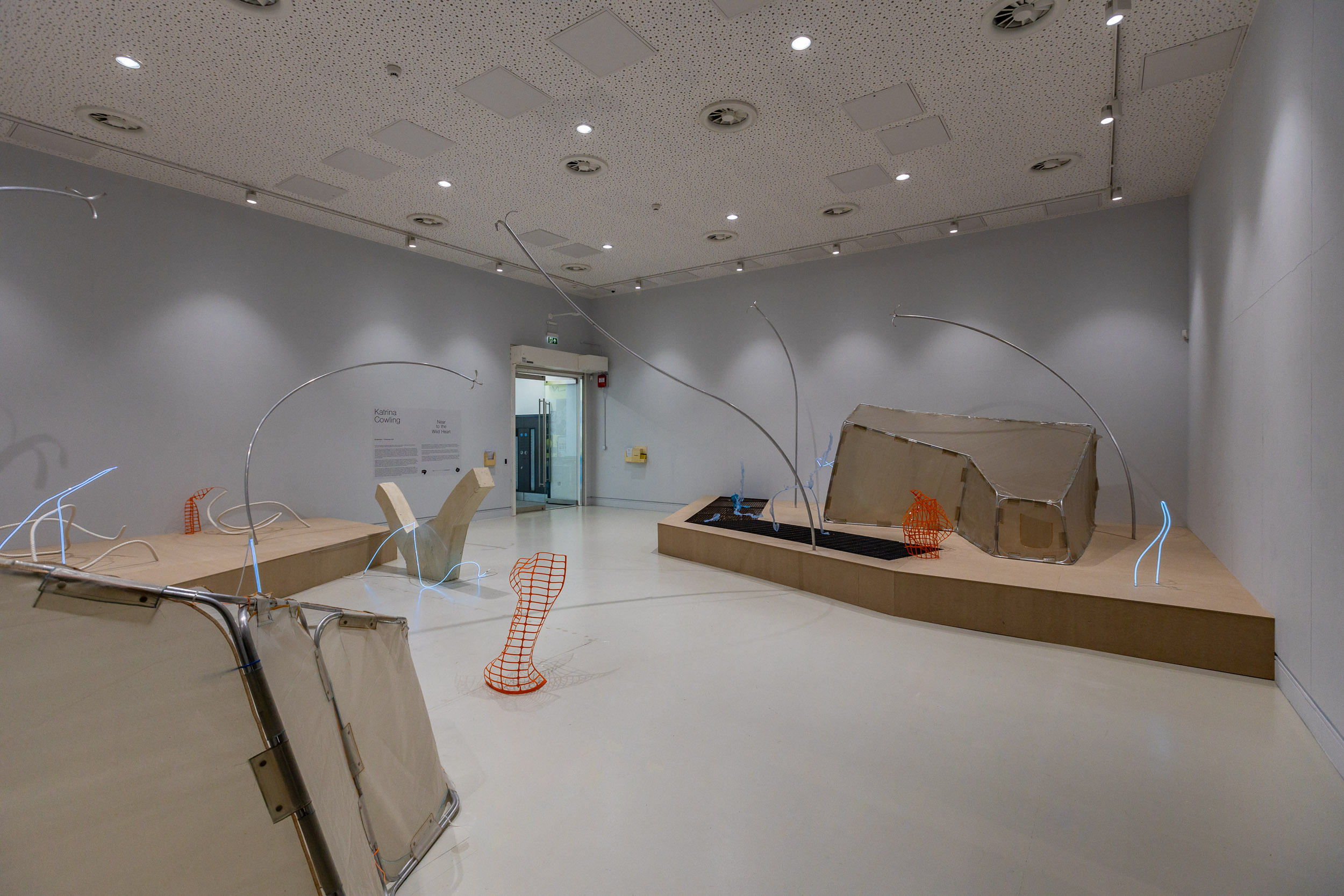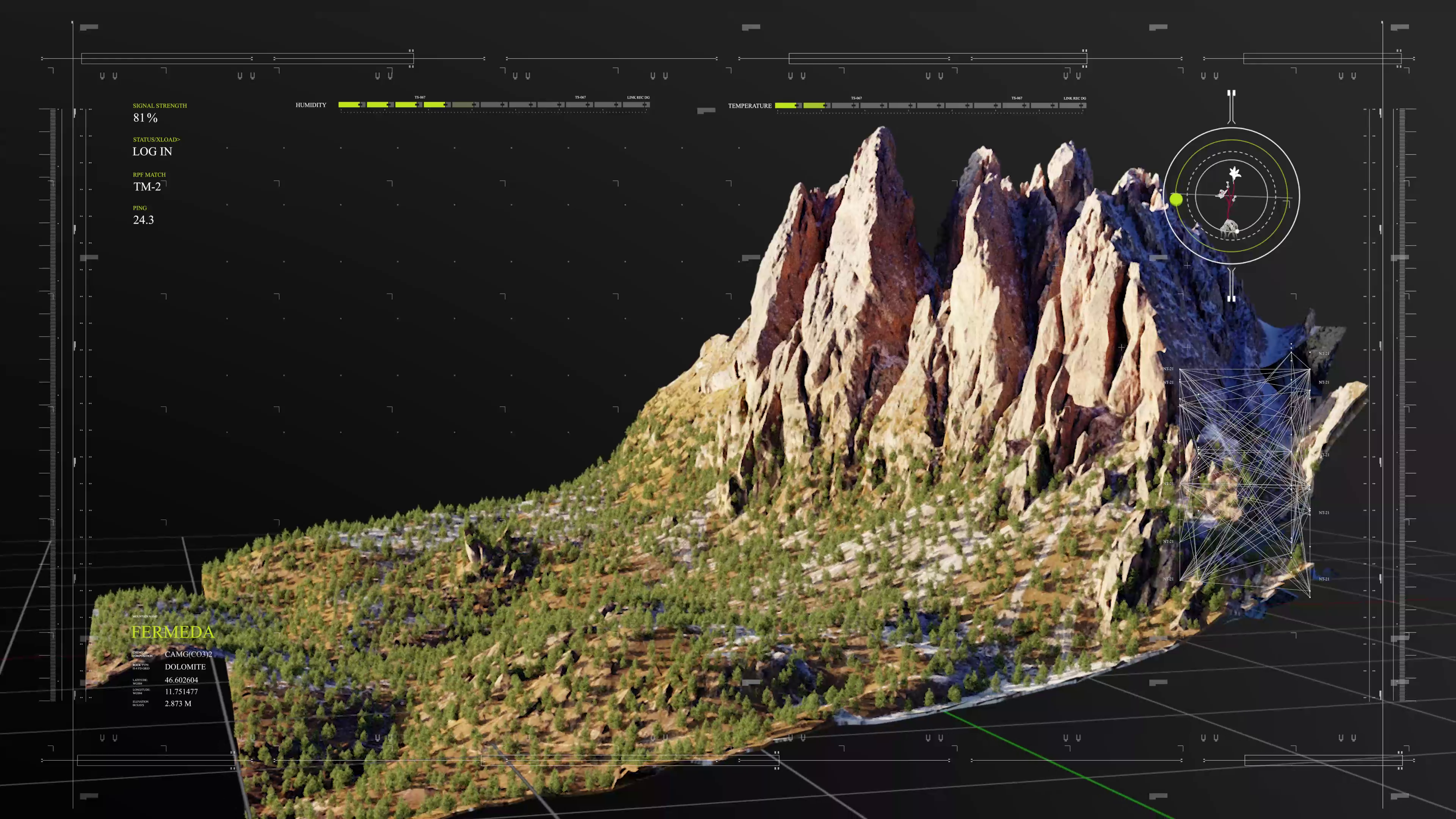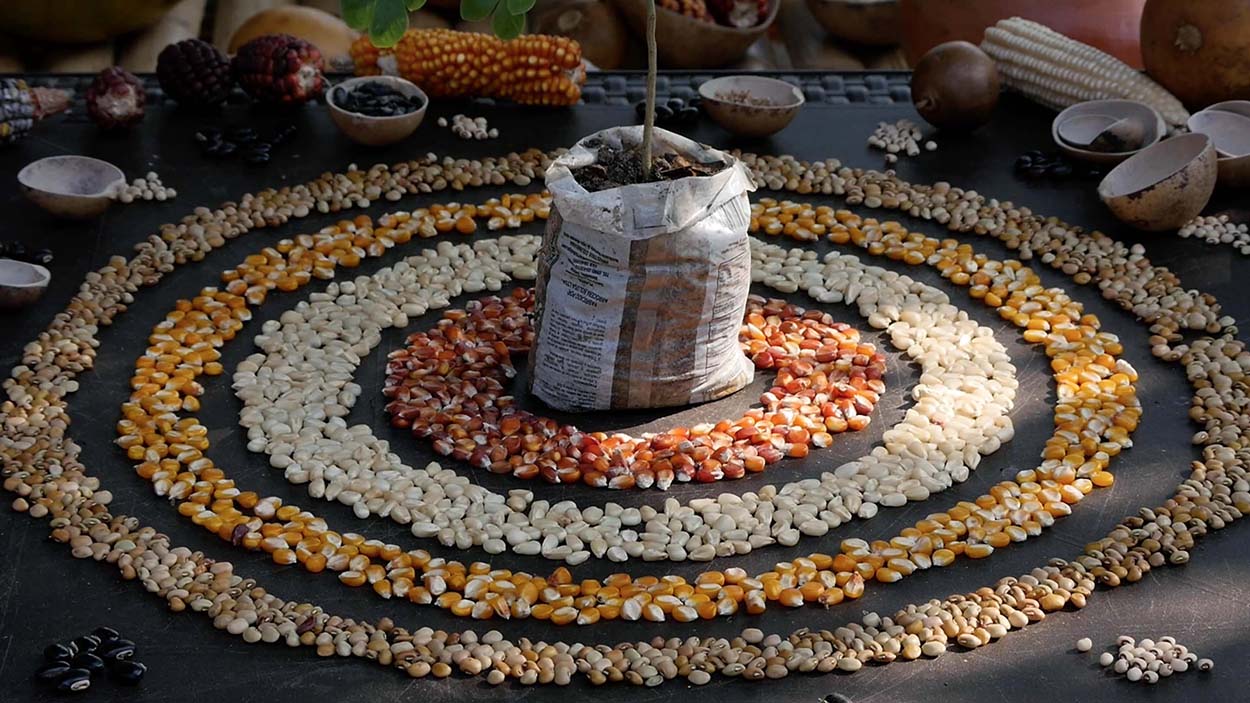May 12–July 22, 2023
Leeds LS2 9AQ
United Kingdom
Hours: Monday–Friday 10am–6pm
Saturday 10am–4pm
T +44 113 202 8000
Artists: Marianne Hoffmeister Castro, Jeannette Muñoz, Renata Padovan, Maya Watanabe. Curated by Mariana Cunha and Marianna Tsionki.
The first lines of Vito Apüshana’s poem, “Kataa—Ououta (To Live—To Die)”, convey at once feelings of permanence and transience in relation to land and kinship. To Live—To Die is an ode to nature’s cycles, conjuring the image of the tree as an agent that represents deep ties to ancestrality, mystic and ritualistic webs weaved in a biocultural environment. Rooted in the indigenous philosophy of Wayuu people in the Venezuela-Colombia border, the poem voices their cosmovision, relationship with nature and understanding of the natural environment. Drawing on Apüshana’s words and imagination, the exhibition We live like trees inside the footsteps of our ancestors presents diverse responses to environmental spoliation on human and nonhuman life, inviting us to reappraise human-nature entanglements.
Encompassing mix-media, sculptural and audio-visual installations, the exhibition moves radically apart from colonial legacies and capitalism’s fixation with material surplus, which became the foundation for exploitative economies, extractive practices, and the schism between nature and culture. Engaging with the intensifying environmental crisis, the artists’ pieces presented in the exhibition disrupt long-established ideologies of landscape and territorial ownership, thus challenging conventional colonial, anthropocentric thinking. Instead, the exhibition invites us to immerse ourselves in the radical coexistence, networks of care and imaginative elaborations of the environment.
A Study of Beaverness or How (not) to be a World-Destroyer (2020–ongoing) by Marianne Hoffmeister Castro reconsiders the afterlives of colonialism in a narrative experiment that explores the presence of beavers in different territories and contexts. Hoffmeister Castro’s work challenges the dominant perception of invasiveness through multidisciplinary methodologies proposing speculative fabulations and alternative environmental futures. The two channel video and research materials are part of an ongoing research-based project which presents non-human perspectives and new iconographies of multispecies cohabitation.
Irreversible (2019) by Renata Padovan explores the aftermath of large infrastructure projects on the Amazon Forest. Focusing on images of snags, standing dead tree trunks emerging from the waters of a flooded forest, the photographic installation invites us unswervingly to face the impacts of extractive activities in the Amazon Forest. Printed in voile fabric, the black and white reproductions offer us a sensorial route through the effects of disaster, thereby exposing the ecologically destructive impacts of “irreversible” developments like Balbina.
Derived from the Mapuche word Mapudungun, Puchuncaví is a town in the Valparaiso province in Chile, also known to be one of the terminals of the pre-Columbian Inca Road system. Uncontrolled industrialisation and extractive activities have turned Puchuncaví into a sacrifice zone, generating extensive social and political tensions. In the two-channel video installation Punchucaví (2015-ongoing), Jeannette Muñoz creates an inventory of fragments, multiplicities, and environmental conditions, in a multi-layered visual representation of the area. The 16mm moving images acquire a tactile feel, where environmental inequality is depicted in fleeting scenes of contaminated waters, toxic air, local fishing activity and animal life, all providing a textural quality to this biocultural environment.
Strategies of survival are explored in Maya Watanabe’s Stasis (2018). This immersive video installation looks closely at the steady reactivation of metabolic operations of crucian carps. Guided by a scientist and filmed at De Waag’s 17th century anatomical theatre building, Stasis disrupts our conventional notions of scale and rhythm, and registers the almost imperceptible inactivity of the fish activating its self-regulating system to undergo cryogenic preservation. As such, the work explores the physiological knowledge of the carp to exist between living and non-living states, while the mesmerising images prompt us to challenge biopolitical conventions of life and death.
